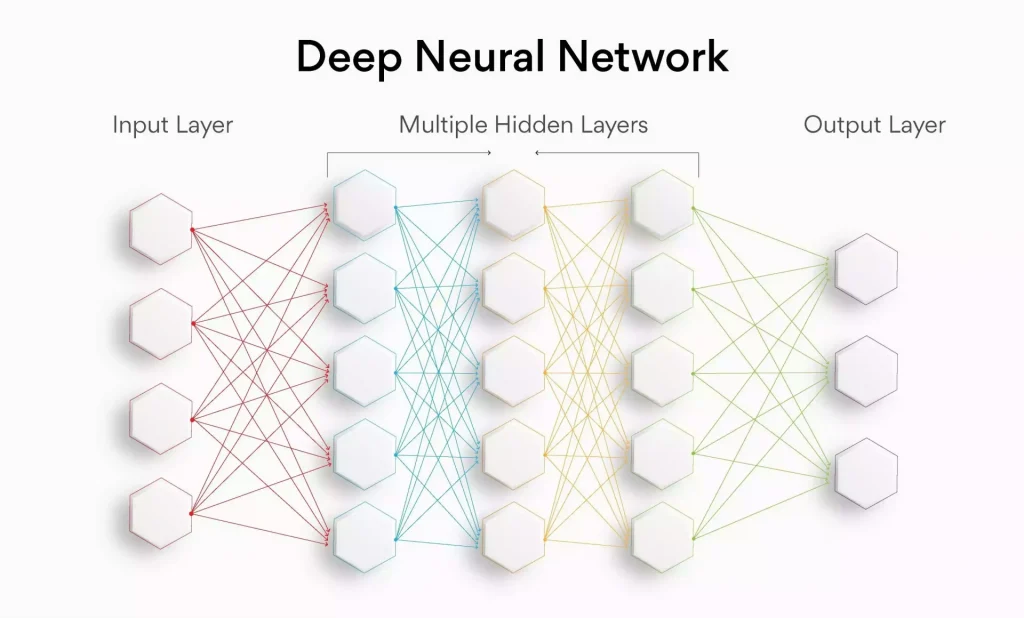At its core, demand forecasting is about using historical data and current insights to make educated guesses about future customer demand. Simple enough, right? But in the fashion and apparel sector, this process takes on a whole new layer of importance and, frankly, difficulty. For a long time, experience and a “gut feeling” played a big role. While intuition still has its place, the industry is rapidly shifting towards data-driven approaches, and for good reason.
The accuracy of your forecast directly ripples through every part of a fashion business. Think about it: fashion items often have short lifecycles. A trendy piece might be hot for a season, then fade away. This “perishability” of trend-based stock means getting your numbers right is key to maximizing sell-through. Understock, and you miss out on sales, leaving money on the table and potentially frustrating customers. Overstock, and you’re looking at heavy markdowns, dwindling margins, and the dead weight of unsold inventory. Both scenarios hit the bottom line hard.
And the challenges? They’re quite specific to fashion.
You’ve got those short product lifecycles we mentioned, leading to high demand volatility. Seasonal trends are a given, but then there are micro-seasons and fleeting fads that can appear and disappear in weeks. Social media, influencers, and viral marketing campaigns can cause demand to spike unexpectedly. Businesses also have to juggle demand from multiple channels – online stores, physical retail, wholesale partners – each with its own patterns. Then there’s the extreme SKU complexity; a single t-shirt style might come in five sizes and ten colors, creating fifty unique items to track and forecast. How do you predict demand for brand new products with no sales history? And all this has to be managed against the backdrop of global supply chain lead times and the potential for disruptions.
It’s a tough balancing act, no doubt about it. This is precisely where specialized fashion demand forecasting software comes into its own, offering capabilities far beyond what manual spreadsheets or generic business intelligence tools can provide. These systems are designed to tackle these very hurdles head-on.
Essential Features: What to Look for in Fashion Demand Forecasting Software
Given the unique pressures of the industry, it’s no surprise that apparel demand planning software needs a distinct set of features. It’s not just about crunching numbers; it’s about understanding the nuances of fashion. So, what should you be looking for?
Advanced Analytics and Predictive Power
This is where the real intelligence lies. We’re talking about the integration of Artificial Intelligence (AI) and Machine Learning (ML). These technologies are game-changers for pattern recognition, spotting anomalies in sales data that a human might miss, and continuously learning to improve forecast accuracy over time. Good software will employ advanced forecasting algorithms – think sophisticated statistical models, machine learning techniques, and sometimes even deep learning. Robust predictive analytics and modeling capabilities allow you to explore different scenarios and understand potential outcomes. This is the heart of AI demand forecasting for fashion.
Data Management and Real-Time Insights
Fashion moves fast, so your data needs to keep up. Look for strong data integration capabilities. The system should be able to pull information from all your key sources: Point-of-Sale (POS) systems, Enterprise Resource Planning (ERP), e-commerce platforms, Customer Relationship Management (CRM), Product Lifecycle Management (PLM), and even external sources like social media trend data, weather services, or economic indicators. Real-time data processing and updates are vital for making agile decisions. You also need the ability to drill down and forecast at a granular level – by individual SKU, specific store, sales channel, or even customer segment.
Fashion-Specific Functionalities
Generic forecasting tools often fall short here. You need features tailored to the rag trade. This includes sophisticated seasonality and trend analysis tools that can distinguish between long-term shifts, micro-trends, and short-lived fads. Scenario planning and “what-if” simulation capabilities are invaluable for testing the potential impact of different buying decisions or marketing pushes. Support for markdown optimization and promotion planning helps you manage inventory value effectively. And, increasingly important, is the ability to incorporate external factors that influence fashion demand, like upcoming local events, shifts in economic confidence, or even unseasonal weather patterns. Many clothing demand forecasting tools are building these in.
Operational and Collaborative Support
The software should also make day-to-day operations smoother and foster teamwork. This means features like inventory optimization recommendations – helping you set appropriate safety stock levels and reorder points. Multi-channel demand visibility, offering a unified view of demand across all your sales avenues, is crucial. Intuitive reporting and visualization dashboards are essential for translating complex data into clear, actionable insights. And don’t forget collaboration tools that allow planning, merchandising, and buying teams to work cohesively from the same set of data. This is where fashion supply chain forecasting software elements often come into play, ensuring everyone is on the same page.
Tangible Benefits of Implementing Specialized Software
Investing in and properly utilizing fashion retail demand forecasting solutions isn’t just about getting slightly better numbers; the advantages can be quite significant, touching both day-to-day operations and broader strategic goals.
First and foremost, you’ll see improved forecast accuracy. This leads directly to significantly optimized inventory levels, meaning a drastic reduction in both overstocks (and the associated markdown costs) and stockouts (and the lost sales). When you have the right product, in the right place, at the right time, you naturally capture more sales and revenue opportunities.
Operationally, the cost savings can be substantial. Think lower inventory holding costs, minimized markdowns, and less need for expensive expedited shipping to rush in missing stock. Your entire supply chain can become more efficient and responsive, leading to better coordination with suppliers.
Beyond the immediate operational wins, this kind of software empowers data-driven decision-making across the board – from initial design concepts and merchandising assortments to buying commitments and financial planning. And when customers can consistently find what they’re looking for, satisfaction and loyalty naturally follow.
There’s also a growing sustainability angle. By reducing waste from unsold goods, businesses can make a real contribution to their environmental goals. Ultimately, mastering demand forecasting gives a fashion business a significant competitive advantage in a market that waits for no one. It transforms a reactive approach into a proactive, informed strategy.
A standout example of what’s possible with specialized software is our work with Wells Lamont, a heritage glove manufacturer with over a century of experience. When their team approached us, they were spending up to 15 hours per week on manual forecasting, 5–20 hours on inventory analytics without a consistent process, and 4–10 hours managing orders manually. Together, we implemented a tailored AI-powered solution that significantly streamlined their workflows. As a result, forecasting time dropped by 33%, inventory analytics time was reduced by 75%, and order management time decreased by 71%. Beyond these time savings, our collaboration helped them improve planning quality, establish consistent analytics practices, and shift toward more strategic, data-driven decision-making. It’s a great example of how combining the right technology with hands-on partnership can create real operational impact.
Best Forecasting Software for Fashion and Apparel
Now, let’s touch upon some illustrative examples. It’s important to state upfront that this isn’t an exhaustive list, nor is it a direct endorsement of any specific product. The aim here is simply to give you a sense of the kinds of solutions available in the market, particularly those often mentioned for their capabilities in the fashion sector. The best demand forecasting tools for fashion for one business might not be the best for another, so thorough research based on your unique needs is always paramount.
Intuendi
Intuendi is often highlighted as an AI-powered demand forecasting and inventory optimization platform, designed to help businesses reduce stockouts and minimize excess inventory.
- Key Fashion Strengths: It typically boasts strong AI capabilities for handling complex demand patterns, new product introductions, and promotions. Its focus on automation can be a big plus for fashion businesses looking to streamline planning.
- Typically Suited For: Businesses of various sizes, particularly those in retail and e-commerce, looking for advanced AI-driven forecasting and inventory management.
StyleCast AI
A cloud-based platform specifically honed for its AI-driven trend prediction and very detailed, SKU-level forecasting for fashion items.
- Key Fashion Strengths: Its standout features often include advanced visual trend analysis (sometimes even analyzing images from social media or runways), sophisticated forecasting for new product introductions, and a strong ability to handle attribute-based complexity like color, size, and style variations.
- Typically Suited For: Mid-to-large fashion brands and retailers who are looking for cutting-edge AI capabilities to really get ahead of trends.
ApparelPlan Pro
This could be an integrated module that sits within a broader apparel-specific ERP (Enterprise Resource Planning) system, offering robust foundational demand planning tools.
- Key Fashion Strengths: The main advantage here is often seamless integration with inventory management, production planning, and other ERP functions. It would likely have solid seasonality modeling and be good for managing complex product assortments from a central system.
- Typically Suited For: Businesses that are already using, or are strongly considering, the vendor’s overarching ERP system and want a well-integrated forecasting tool without adding another standalone solution.
TrendPulse SMB
Picture a user-friendly, standalone inventory forecasting software for fashion designed specifically with smaller fashion businesses and emerging designers in mind.
- Key Fashion Strengths: Simplicity would be key here – an intuitive interface, perhaps pre-built fashion forecasting models that don’t require deep statistical knowledge, and often an affordable SaaS (Software as a Service) subscription model.
- Typically Suited For: Small to medium-sized fashion businesses, or even solo designers, who need an accessible and effective forecasting solution without the need for extensive IT overhead or a large budget.
Key Considerations for Selecting Software
Choosing the right demand forecasting software is a significant decision, one with long-term implications for your business. It’s not just about the features on paper; it’s about finding the best fit for your specific operational needs, your team’s capabilities, and your future growth aspirations.
So, what critical factors should you evaluate?
First, consider scalability: will the software grow with your business, or will you outgrow it quickly? Integration capabilities are also paramount: how well will it connect with your existing systems like ERP, POS, and e-commerce platforms? Don’t overlook vendor support and expertise: does the vendor understand the fashion industry’s unique challenges?
The user-friendliness of the interface and the quality of its reporting and analytics dashboards will directly impact adoption and daily use. Of course, cost and return on investment (ROI) are major factors; ensure you understand the total cost of ownership and the potential benefits. Finally, think about future-proofing: does the software leverage modern technologies like machine learning fashion forecasting, and does the vendor have a clear roadmap for future development and innovation?
Taking the time to carefully assess these points will guide you toward a solution that not only addresses your current forecasting needs but also becomes a valuable strategic asset for years to come. It’s an investment in clarity and control in an industry that thrives on change.






